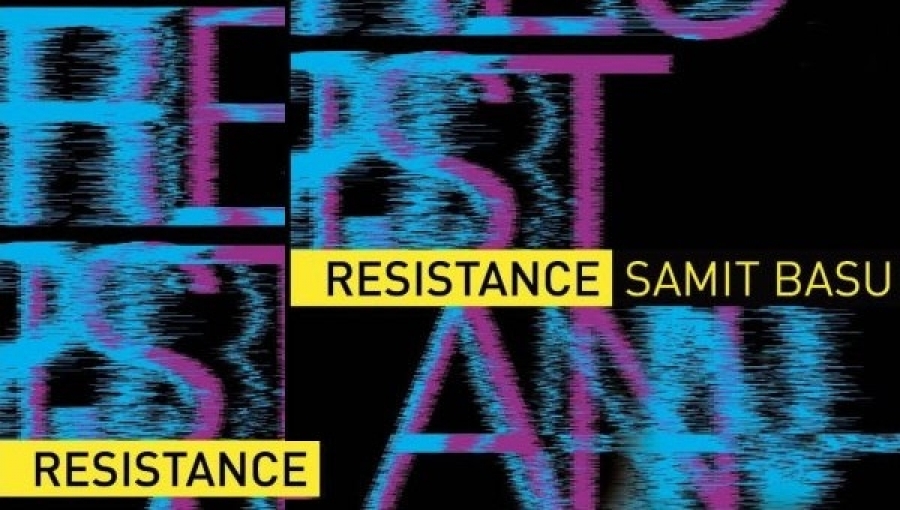“No one, no matter how bad, considers themselves the villain of their own story.” This was one of the conclusions I reached in my review of Samit Basu’s Turbulence last year: a superhero novel set in India, which explored the rather complex aspects of good vs. evil, heroes vs. villains, etc. Now, after reading the sequel, Resistance, I’m not sure that that statement still holds. It’s true to some degree. But, like with the first book, nothing is ever as simple as it seems.
11 years have passed since the events of the first book, and the whole world has changed. In Turbulence, the concept of real-life superheroes was a brand new thing. In Resistance, they’re everywhere. Which leads to another interesting question: what happens when a world raised on Superman, Batman, the Avengers, etc. becomes a world of actual superpowered beings?
Of course, many of them choose to fight crime in one way or another, whether solo or on a super team. Many of those not blessed with superpowers engage in a practice called “Brucing:” trying to turn themselves into Batman. Then, there are those who make the conscious decision to become supervillains, complete with evil lairs, weapons, henchmen, the whole nine yards. These people are still not the villains of their own story. Not quite. But, they set out to become the villain of everyone else’s.
Meanwhile, several of the characters from the previous book have become “The Unit,” the most powerful superhero team on the planet. Their chief enemy is a mega-corporation called “Utopic,” which secretly experiments on powered individuals in facilities that the Unit calls “Utopic Zoos.” Occasionally, these experiments escape and are unleashed upon the world, and the Unit has to be called in to stop them—while Utopic uses its vast connections to deny any involvement.
To top it all off, now, all the world’s psychics are suddenly predicting the end of the world—all on a specific date, just a couple of weeks away. Who, among the many evil, sinister, or simply uncontrollable supers on the planet is responsible? How can it be stopped? And, what exactly, does the “end of the world” actually entail?
One of the things I like about this book is that it takes place in the future. A lot of stories with large time gaps still maintain the approximate present period, no matter how much time is supposed to have passed. The characters change, but the world around them stays the same; however, in Resistance, we get to see the progression of everything from technology to politics to social structure—all largely guided by supers—over the course of those 11 years.
Another thing I like is the diversity of the superpowers that we see. People get superpowers that are based on what they desire most in the world. For some, that means super strength, super speed, flying, etc. Some can turn into animals or build/create their own living creatures. There are occasional vampire invasions, zombie outbreaks . . . and people who just use their powers to annoy every person on the planet.
In Turbulence, each person’s power was a direct reflection of who they were and what they wanted before they got them. In Resistance, there seems to be less of a direct correlation—or at least, less exploration of it. The world has lived so long with superpowers that who you were before doesn’t really matter. The focus is who the characters are now—and what superpowers, and the world at large, have turned them into.
There’s also plenty of further exploration of the good vs. evil, heroes vs. villains issue. There are scenes where two superhero teams fight against one another, because each firmly believes that they’re in the right and trying to save the world. There are scenes where two supervillains meet and talk with one another—each also convinced that they’re in the right. And, there are places where the superheroes and supervillains are exactly the same people.
Resistance isn’t quite as good as Turbulence was, but then, few books are. Turbulence remains one of my favorite superhero novels of all time—and I’ve read quite a few. Resistance is still very good in its own right, and a great continuation of the story and characters from the previous book. If you’re into superheroes at all (and who isn’t?), both Turbulence and Resistance are well worth your time.

